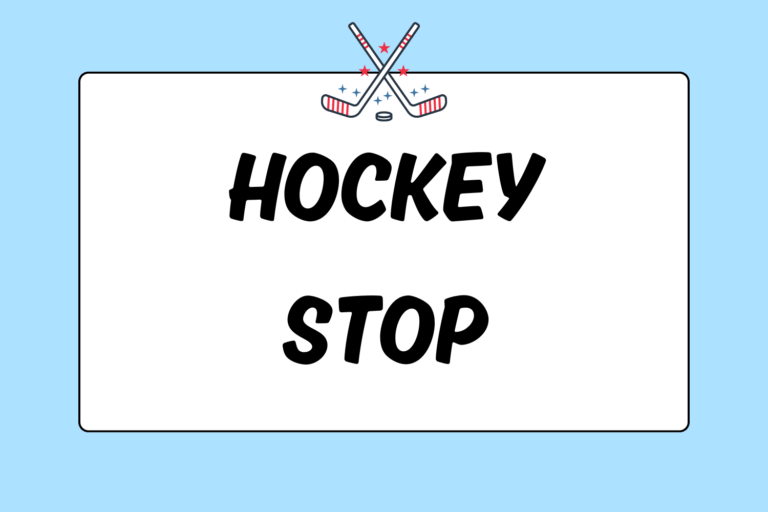The ice hockey goalie position has often been described as the loneliest job in any sport. Goalies essentially play a different sport than their teammates, and they don’t spend any time on the bench with their comrades. Further, when a goalie loses, they often carry the burden of the loss by themselves.
However, this is not to say that goalies shouldn’t communicate with their teammates on the ice. Since goalies often have a much better view of the game than their on-ice teammates, there is a lot of valuable info they can relay. This guide breaks down the best ways for goalies to talk to their teammates.
Seeing Plays Develop
All hockey players must trust each other. On-ice communication goes both ways. There will certainly be times when a goalie has a better view of a play developing, and others when his defenseman will be more apt to read the opposing team’s next move. Call out plays as you see them, and trust your teammate’s orders; whether you’re a goalie or a skater.
Goalie Calls
Talk to your teammates during practice and off the ice, and let them know the words and phrases you’ll use to indicate certain situations. Here are some important notes:
- Use short phrases: Calling out, “hey look over to your left, there’s a man coming towards you” isn’t nearly as efficient as “man on!”
- Repeat yourself: Using short phrases allows you to repeat yourself, which helps you relay information clearly and urgently. Make calls two or three times in quick succession to get your teammates’ attention.
Here are the situations that demand the most communication, as well as suggested phrases to use:
Screen
Calling screens whenever your vision is obstructed will prevent many goals against. However, you’re not limited to merely calling out “screen!” when it’s your teammate that’s unintentionally blocking your vision. You can also call out “screen” followed by a location (such as, “screen slot!”) to let your teammates know that they should push away a defender who’s setting a screen.
Pressure
When a defenseman picks up the puck in your zone, he will often have a forechecker on him. Help him out by calling out “time!” or “space!” if he’s not in danger. This will let him slow down and make the best play.
Alternately, if your teammate doesn’t have time, you can yell out “man on!” or “watch left!” to let them know where the pressure is coming from. Further, if the situation looks particularly bleak, feel free to tell your teammate to “dump!” or “ice it!” to relieve pressure.
Open Man
There are few worse sights to a goalie’s eyes than seeing an opposing player all alone in a dangerous area of the ice. In these situations, call out the location of the opposition so your teammates can pick them up. Example calls are “backdoor!” or “high slot!”
Call for Shots
When the puck is at the point, or when the opposing team has a two-on-one, it can be difficult for your defense to know what you want them to do. If you’d prefer that they take away the pass or guard the open man, call for “shot!” Doing so will help them make the defensive pickup that you want them to, and it gets both you and the defense on the same page. Leave nothing to guess work. If you want the shot, call for it!
Receiving Orders
As stated earlier, communication goes both ways. There will be times when your teammates will be able to help you with on-ice advice. This occurs the most when you’re going to play the puck behind the boards. Talk with your teammates during practice, and have them offer you verbal assistance in the following situations:
- With time: When you’re playing the puck behind the net and you’re not pressured, have your teammates call out “you’ve got time!” or “leave it!” This way you can drop the puck, get back in your crease, and watch your team execute a clean breakout.
- With light pressure: When you go to play the puck and there’s a trailer behind you, have your team call out “play it!” In this instance, you should just pass the puck forward in the direction you’re facing to get it away from the pressure from behind.
- With heavy pressure: When the situation is bleak, you team should call out “send it!” This should be your cue to shoot the puck hard and high along the boards… and get back in the crease!
Using Your Stick
There’s one other way you can communicate with teammates on-ice… and it’s non-verbal. When your team is set up on the power play in the other zone and the penalty is a few seconds from expiring, clap the backhand of your stick blade on the ice three times. This will let your team know the man is coming out of the box.
This is important because the skater leaving the box is behind the defense and in a very dangerous position on the ice. It will let your team know that they should get the puck deep in the offensive zone, and consider a line change to adjust back to even strength.
Hot Tip: Clap Your Stick at Practice
While it might sound silly, clapping your stick does take some practice. Work on getting each clap to be loud and crisp. Further, you can prevent breaking your stick by getting the clap to be loud without having to smack it that hard. For this reason, consider practicing with an old stick until you get the hang of things!
Keep on Talking
The key behind giving and receiving quick verbal commands is to do it all the time. Don’t just use these in games; use them in scrimmages and during drills as well. The idea is to always use verbal commands with your teammates so they become second nature to you. This way, your communication skills are most valuable come game time.





